Discover 11 hidden attractions, cool sights, and unusual things to do in Northumberland National Park (United Kingdom). Don't miss out on these must-see attractions: St Cuthbert's Church, Harbottle Castle, and Vindolanda. Also, be sure to include Yeavering Bell in your itinerary.
Below, you can find the list of the most amazing places you should visit in Northumberland National Park (England).
Table of Contents
St Cuthbert's Church
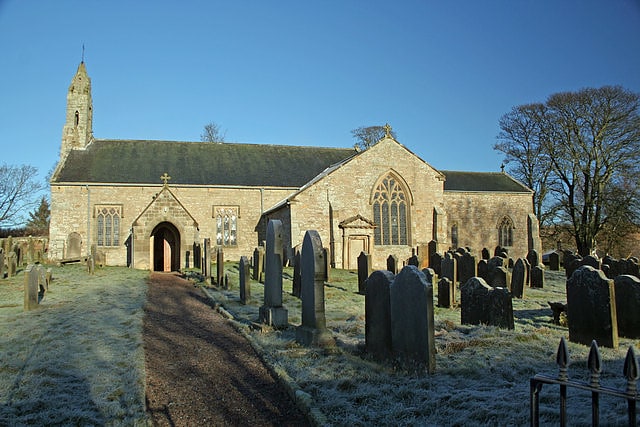
Church in Elsdon, England. St Cuthbert's Church is located in Elsdon, Alnwick, northeast England. The church was one of the resting places of St. Cuthbert's body in the wanderings of the monks. It is one of the many dedicated to his memory. St Cuthbert's Church is a Grade I listed building in Northumberland.[1]
Harbottle Castle

Castle in Harbottle, England. Harbottle Castle is a ruined medieval castle situated at the west end of the village of Harbottle, Northumberland, England, 9 miles west-north-west of Rothbury overlooking the River Coquet. It is a Scheduled Ancient Monument and a Grade I listed building.
It is thought that the mound on which the keep stands was a site used by the ancient Britons, and that in Anglian times, there was a stronghold on the site held by Mildred, son of Ackman. The present castle was built about 1160 by the Umfraville family at the request of King Henry II on land awarded to them following the Norman Conquest, presumably as a defence against the Scots.
Not long after its erection, in 1174, it was taken by the Scots and was then rebuilt more strongly. In 1296, it was besieged by Robert de Ros, and some 40,000 men, but the siege by the supporters of John Balliol was withstood. In the 1310s, Robert the Bruce captured the castle. It was restored in 1336, but was in ruins again by 1351. It was repaired at the end of the 14th century, and in about 1436 the castle passed into the hands of the Tailleboys. It was for a long time the residence of the Warden of the Middle Marches and used as a prison.
In 1515, Margaret Tudor, the widowed queen of King James IV of Scotland and sister of King Henry VIII of England, having been banished by the regent, John Stewart, Duke of Albany, came to the castle with her second husband, Archibald Douglas, 6th Earl of Angus. There, their daughter was born, who was also called Margaret. Margaret Douglas was to become the mother of Lord Darnley, the second husband of Mary, Queen of Scots, and grandmother of King James VI of Scotland and I of England. Further building work took place between 1541 and 1551 and more repairs were made in 1563.
In 1605, King James I granted the castle and manor to George Home, 1st Earl of Dunbar, Lord Treasurer of Scotland, but thereafter, the castle fell into decay and much of its masonry was used in other buildings. A survey of 1715 reported the castle to be ruinous once more. Today, only earthworks and some standing masonry remains. The site is run by the Northumberland National Park Authority and entry to it is free.
Confusingly, following the abandonment of the castle as a residence, the name Harbottle Castle was reused as follows:-
Harbottle Castle (grid reference NT93234796) is also the name of a 19th-century mansion house situated at the east end of Harbottle village.
Stone from the derelict medieval castle was used in the building of a 17th-century manor house. The manor was acquired by Percival Clennell in 1796, and in 1829, the house was replaced on the site with a two-storied five-bayed mansion designed by architect John Dobson for Fenwick Clennell. The house is protected with Grade II listed building status. The stable block was converted into a separate house in 1890.[2]
Vindolanda
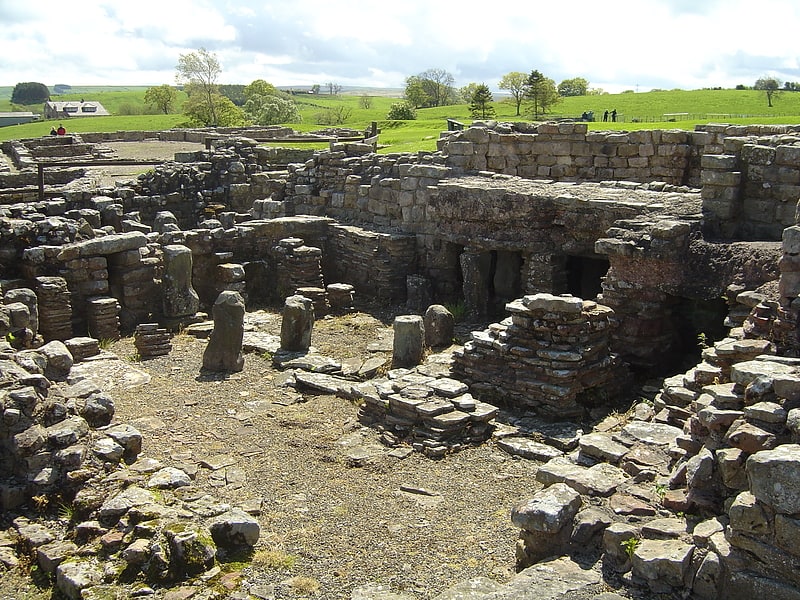
Fort. Vindolanda was a Roman auxiliary fort just south of Hadrian's Wall in northern England, which it originally pre-dated. Archaeological excavations of the site show it was under Roman occupation from roughly 85 AD to 370 AD. Located near the modern village of Bardon Mill in Northumberland, it guarded the Stanegate, the Roman road from the River Tyne to the Solway Firth. It is noted for the Vindolanda tablets, a set of wooden leaf-tablets that were, at the time of their discovery, the oldest surviving handwritten documents in Britain.[3]
Address: Vindolanda Vindolanda Bardon Mill, NE47 7JG Northumberland National Park
Yeavering Bell

Hill in England. Yeavering Bell is a twin-peaked hill near the River Glen in north Northumberland, England, to the west of Wooler, and forming part of the Cheviot Hills. The summit, 1158 feet above sea level, is encircled by the wall of a late-prehistoric hillfort, a tribal centre of the Votadini called in Brythonic and Old Welsh Din Gefron, from which the name stems.
The hillfort encloses an area of approximately 12 acres (4.9 ha) and is enclosed by a stone wall, upwards of 10 ft (3.0 m) thick, having four entrances, one of which is defended by a guard-house; and within this area is an inner fort, excavated out of the rock, of an oval form, measuring 13 ft (4.0 m) across at the widest part. On the sides of the hill, and in a high valley between the Bell and the next hill, called Whitelaw, there are many remains of stone huts rudely flagged, some in groups surrounded by rampiers (ramparts), and others isolated. Barrows, too, are numerous here.
The hillfort enclosure was constructed in two phases, according to a survey by English Heritage. The 'roundhouses' within the fort suggests communal living but these need not all have been dwellings. The differing size of these buildings may have indicated the status of their original occupants.
The buildings of the hillfort would have been bright pink when first constructed, being made from local andesite. This stone is pink when quarried and turns, after a few years’ exposure to the elements, to a dull grey.
Yeavering Bell overlooks the important Saxon site of Yeavering in the valley just to the north, which was mentioned by Bede in his Ecclesiastical History of the English People. The outlines of the wooden royal hall and assembly building have been marked out in the grass at Yeavering, and can be picked out from the slopes of Yeavering Bell.[4]
Elsdon Tower
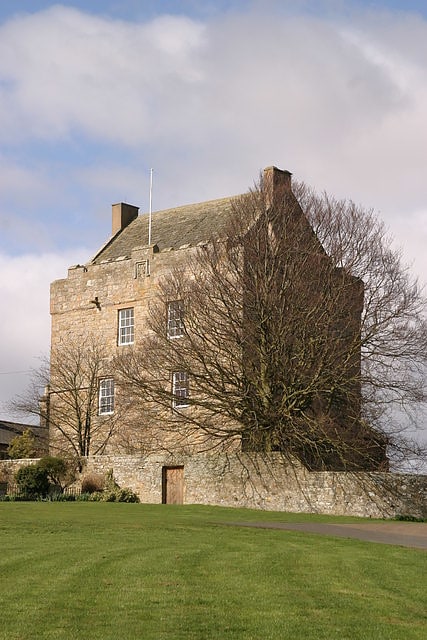
Tower in Elsdon, England. Elsdon Tower is a Grade I listed medieval tower house converted for use as a Rectory situated at Elsdon, Northumberland. Originally part of the estate of Elsdon Castle, it later become a rectory and is now a private residence. The original construction dates from the 15th century and has been modified several times.[5]
Biddlestone Chapel
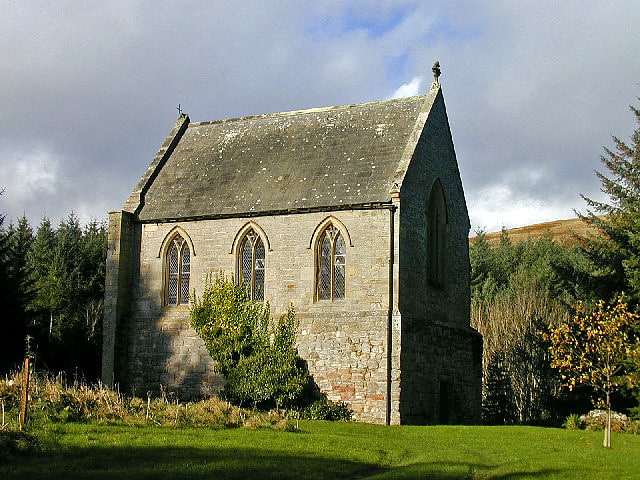
Chapel in England. Biddlestone Chapel is a redundant Roman Catholic chapel in Biddlestone, Northumberland, England. It is recorded in the National Heritage List for England as a designated Grade II* listed building, and it is owned by the Historic Chapels Trust. The lower parts of the structure, a former pele tower, are designated as a Scheduled Monument. The chapel is located on the slopes of the Cheviot Hills in the Northumberland National Park.[6]
Shillhope Law
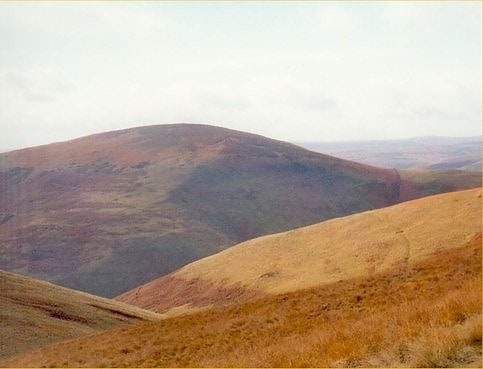
Hill in England. Shillhope Law is a hill in the southern Cheviots, a range of hills in Northumberland, England. Shillhope Law is a relatively unremarkable member of this group; in common with its neighbours it has a small summit and steep, grassy sides falling to deeply incised valleys on either side. However, unlike its neighbours, the ridge connecting Shillhope Law to the higher dome of The Cheviot to the north is bisected by a low col at 343 metres m, giving it enough relative height to be a Marilyn.
The narrow road that climbs up Coquetdale from Alwinton to the foot of Shillhope Law eases any access problems. On the other side of the valley lies the Otterburn Training Area and training (without live ammunition) can take place on the northern side of Shillhope Law. Shillhope Law can be easily climbed from the farms on its western side, Barrowburn and Shillmoor, although the ascent is steep. These two climbs can be combined to give a circular walk of about 5 miles (8.0 km).
The view is not far-reaching in any direction because numerous hills and ridges of the same height or higher in all directions except south and south-east.[7]
Dally Castle

Dally Castle is a ruined 13th-century stone motte-and-bailey fortress in Northumberland, and one of the first hall houses in Northumberland. It lies 5 miles west of Bellingham Castle, and 4 miles west of Bellingham on the Chirdon Burn, a tributary of the North Tyne. Dally Castle House was built in the 18th century next to the castle. Across the road lies a small flour mill used to grind wheat during the Napoleonic War.[8]
Tosson Hill

Hill in England. Tosson Hill is the highest hill in the Simonside Hills to the south of Rothbury in Northumberland, England. The summit lies about 2 kilometres west of Simonside, the best-known summit of the Simonside Hills.
The summit is about 1 kilometre (0.62 mi) west of the edge of the Forestry Commission-owned Simonside Forest, and unlike the rest of the Simonside hills there was no public access to the summit. This has now changed, as the area is ‘access land’ under the terms of the Countryside and Rights of Way Act 2000.
The sandstone crags at Ravensheugh on the northern side of Tosson Hill offer a variety of short rock climbing routes. They are usually less busy than crags within the Simonside Forest.[9]
Hethpool House

Building in Kirknewton, Northumberland, England. Hethpool House is an Edwardian house in Hethpool, in the civil parish of Kirknewton, near Wooler, Northumberland, England which has Grade II listed building status. Built in 1919 on the site of a late 17th-century house which had been the seat of Admiral Lord Collingwood, it was improved in the Arts and crafts style in 1928 for Sir Arthur Munro Sutherland Bt.
The grounds include the remains of an ancient pele tower, Hethpool Tower, which was a small fortified 14th-century tower house, and which is now a Scheduled Ancient Monument and Grade II listed building.[10]
College Valley

The College Valley is one of five cuttings into the Cheviot Hills. The valley is owned by College Valley Estates which in turn is funded by a trust created by Sir James Knott MP.
The valley is spectacularly beautiful and affords a serenely satisfying ascent of the Cheviot - 815 metres - the highest peak in the area.
The Estate covers approximately 12,000 acres and is now managed by a Board of Directors whose duty is to manage it in a way that increases its value as an environmental, social and economic place of excellence. From north to south the estate is approximately 10 km and at its widest 7 km. There are over 105 km of roads and pathways criss crossing the College Valley.
The valley is open to the public, but access by car is restricted to permit holders only and these are limited on a daily basis.[11]